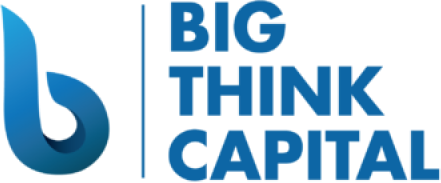Demystifying the Fed’s Recent Interest Rate Changes and Their Impact on Small Business Financing
Estimated Reading Time: 5 minutes
- Monitor economic indicators to stay informed.
- Evaluate your financing needs in light of rising rates.
- Prioritize your financial health to navigate lending conditions.
Table of Contents
- The Current State of Interest Rates
- How Interest Rate Changes Affect Small Business Financing
- Navigating the Lending Landscape Amid Changing Rates
- Practical Takeaways for Small Business Owners
- FAQ
The Current State of Interest Rates
As of January 2025, the Federal Reserve has maintained a cautious approach to interest rate adjustments, with the federal funds rate positioned between 5.25% and 5.50%. These rates are elevated compared to the pandemic lows of 0% to 0.25% seen in 2020. While the Fed has signaled a pause on further rate hikes, experts anticipate gradual adjustments in response to inflationary pressures and economic growth trends.
For small businesses, this context means that borrowing costs remain relatively high compared to recent years, which necessitates strategic planning and informed decision-making.
Source: Federal Reserve Economic Data
How Interest Rate Changes Affect Small Business Financing
Interest rate fluctuations have a direct correlation with various financing products available to small businesses. Here are the critical areas affected by these changes:
1. Cost of Borrowing
With higher interest rates, the cost of borrowing increases. This affects different types of financing, including:
- Working Capital Advances: APRs can rise, increasing overall repayment amounts.
- SBA Loans: While these government-backed loans still carry lower-than-market rates, they are not immune to shifts in the prime rate.
- Merchant Cash Advances: Rates typically fluctuate with interest rate changes, leading to potentially higher costs for businesses.
- Equipment Financing and Lines of Credit: These products may also see a rise in interest rates, impacting overall affordability.
2. Consumer Spending and Demand
Higher interest rates can dampen consumer spending as personal loan and mortgage rates rise, leading consumers to tighten their budgets. This, in turn, can impact small business revenues, especially for those reliant on discretionary spending.
- Reduced Sales: Slower sales can lead to cash flow challenges in maintaining operations or pursuing growth.
- Adjustment in Inventory Purchases: Business owners may need to reconsider their inventory strategies based on anticipated changes in customer demand.
3. Investment Decisions
As financing becomes more expensive, businesses may rethink their investment strategies. High-interest rates can discourage capital expenditure on machinery, equipment, or expansion initiatives.
- Prioritizing Essential Investments: Businesses may shift focus to projects with immediate returns rather than long-term growth initiatives.
- Exploring Alternative Financing Options: Business owners might consider less traditional funding avenues such as private investors or crowdfunding.
Navigating the Lending Landscape Amid Changing Rates
Despite the challenges posed by rising interest rates, small business owners can adopt specific strategies to mitigate risks and enhance their funding outcomes.
1. Strengthening Financial Health
Before seeking funding, businesses need to present a robust financial profile. Here are some steps to bolster financial health:
- Review Financial Statements: Regularly update income statements, balance sheets, and cash flow statements to provide a clear picture of your financial stability.
- Improve Credit Score: Aim for a credit score above 700 to secure better interest rates. Pay down debts, make timely payments, and avoid excessive credit inquiries.
- Optimize Cash Flow Management: Implement practices to enhance cash flow, such as efficient inventory management and timely invoicing.
2. Diversifying Financing Options
Relying solely on traditional bank loans may not be the best approach amid rising rates. Consider these alternatives:
- Equipment Financing: This type of loan is secured against the equipment, often leading to lower interest rates and easier approval.
- Merchant Cash Advances: For businesses with high credit card sales, MCAs can provide quick funding, though at a higher cost.
- SBA Loans: Although they have longer approval times, SBA loans can offer competitive rates, especially for established businesses.
3. Locking in Rates
If pursuing financing, consider fixed-rate products to shield against further interest rate hikes. Securing a loan at a stable interest rate now can prevent your costs from escalating in the future, especially with signs pointing to gradual increases in rates over the coming year.
4. Building Relationships with Lenders
Fostering connections with lenders can provide advantages down the line:
- Understanding Your Options: By establishing relationships, you can gain insights into available products tailored to your business needs.
- Pre-approval Opportunities: Approaching lenders early may allow you to understand your borrowing capacity better and secure pre-approval for when you’re ready to invest.
Practical Takeaways for Small Business Owners
- Monitor Economic Indicators: Stay informed about the Fed’s decisions and broader economic indicators, such as inflation and unemployment rates, which can signal changes in the financial landscape.
- Evaluate Financing Needs: Take stock of your current financial situation and how rising rates could affect your funding strategy.
- Prioritize Financial Health: By maintaining strong financial practices, you position your business favorably to navigate changing lending conditions and secure necessary funds.
In conclusion, while recent interest rate changes present challenges for small business financing, they also create opportunities for informed and proactive business owners. By staying educated, preparing your financials, and exploring diverse funding options, you can successfully navigate the current lending landscape.
At Big Think Capital, we understand the intricacies of small business financing and are here to help you explore your options. If you’re ready to learn more about how we can assist you in securing the funding your business needs, visit us at bigthinkcapital.com. Speak with a funding expert who can guide you through your financing journey and ensure your business thrives in today’s economy.
FAQ
- What are the current interest rates set by the Fed?
- How can I prepare for rising interest rates?
- What financing options are best for small businesses during rate hikes?






